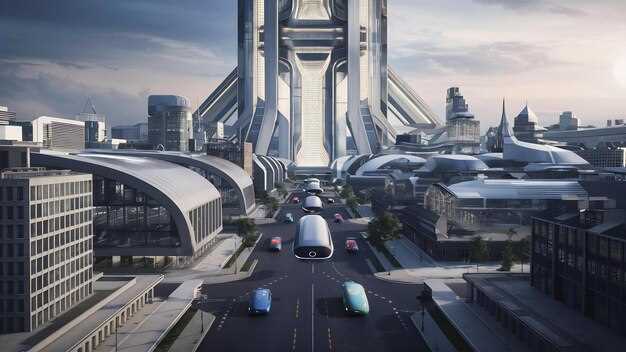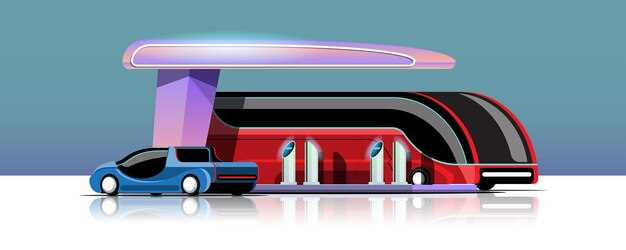
The advent of hyperloop transport represents a revolutionary leap in the way we conceptualize and utilize ground-based travel. As urbanization intensifies and populations swell, traditional highways struggle to cope with the increasing demand for efficient and sustainable transportation solutions. Hyperloop technology offers a compelling alternative, one that promises not only to alleviate congestion but also to significantly reduce travel times between major urban centers.
Hyperloop systems, which utilize pods traveling at high speeds through low-pressure tubes, have the potential to redefine the landscape of transportation. Unlike conventional highways, where vehicles are often bogged down by traffic and delays, hyperloop transport can achieve speeds exceeding 700 miles per hour, effectively transforming hours of travel into mere minutes. This efficiency can facilitate economic growth by enhancing connectivity and accessibility across regions, thereby fostering opportunities for trade, tourism, and local businesses.
Moreover, the hyperloop’s design prioritizes sustainability, presenting an eco-friendly alternative to the carbon-intensive highways currently in use. By minimizing energy consumption and utilizing renewable energy sources, hyperloop transport aligns with global efforts to combat climate change and reduce our reliance on fossil fuels. As we explore the viability of hyperloop as a replacement for existing highway systems, it becomes clear that this innovative mode of transport could not only reshape our transportation networks but also lead us toward a more sustainable and efficient future.
Cost Analysis of Hyperloop Implementation vs. Highway Infrastructure
The implementation of hyperloop technology poses a compelling alternative to traditional highway infrastructure. Initial estimates for constructing hyperloop systems suggest that while the upfront costs may be high, the long-term savings and potential revenues could revolutionize transportation economics.
The average cost of building a mile of highway can range from $2 million to $5 million, depending on various factors such as location, terrain, and regulatory considerations. In comparison, early projections for hyperloop systems estimate costs around $30 million per mile. However, these figures do not capture the full cost-benefit scenario.
Operating expenses for highways, including maintenance, repairs, and traffic management, can accumulate significantly over time. Conversely, once constructed, hyperloop systems may offer lower operational costs due to minimal ground friction and reduced wear on infrastructure. This could translate into lower energy consumption and, consequently, lower operational expenditures compared to maintaining extensive highway networks.
Moreover, highway congestion leads to economic losses through lost productivity and increased transportation times. Implementing hyperloop could dramatically reduce travel time and increase efficiency, leading to potential economic gains for businesses and individuals alike. As hyperloop networks develop, revenue generation through ticket sales and ancillary services may also contribute to offsetting the initial capital expenditure.
In summary, while the initial financial commitment for hyperloop infrastructure appears significant, a comprehensive cost analysis reveals the potential for long-term savings and efficiencies. The revolution in transportation offered by hyperloop systems could redefine traditional economic models related to travel and logistics, making it a viable competitor to existing highway frameworks.
Safety and Environmental Impacts of Adopting Hyperloop Technology

The advent of hyperloop technology presents a revolutionary approach to transportation that prioritizes safety and environmental sustainability. Unlike conventional roadway systems, hyperloop systems operate within a controlled environment, significantly reducing the risk of accidents caused by weather conditions or human error. The enclosed pods travel at high speeds within low-pressure tubes, minimizing the likelihood of collisions and enhancing passenger safety.
Moreover, the hyperloop’s design incorporates advanced safety features, such as automatic braking systems and real-time monitoring, which further enhance its reliability. Additionally, the use of autonomous systems can streamline operations and reduce the need for human oversight, further diminishing the potential for tragic mishaps.
On the environmental front, hyperloop technology promises a substantial reduction in carbon emissions compared to traditional highway transport. By utilizing renewable energy sources like solar power, hyperloop systems can operate with minimal environmental impact. The energy efficiency of hyperloop trains allows for multiple passengers to travel in a single pod, greatly reducing the per capita energy consumption associated with road vehicles.
Furthermore, the construction of hyperloop infrastructure can potentially minimize land use compared to expansive highway networks, preserving natural habitats and reducing urban sprawl. The ability of hyperloop systems to connect urban centers without the extensive land footprint of highways could lead to a more balanced and sustainable development of cities.
In conclusion, the transition to hyperloop technology presents not only a revolutionary solution for transportation efficiency but also a significant opportunity to enhance safety and reduce environmental impacts associated with travel. As we move forward, embracing hyperloop systems could lead to a safer, cleaner, and more sustainable future for transportation.
Regulatory Challenges and Solutions for Hyperloop Integration

The integration of hyperloop transport systems into existing infrastructure faces several regulatory challenges that need addressing to ensure successful implementation. One major challenge is the establishment of safety standards that meet both federal and state requirements. As hyperloop technology is still in its infancy, existing regulations regarding transportation safety do not specifically account for this novel mode of transit. To resolve this, regulatory bodies can develop new guidelines tailored to the unique operational characteristics of hyperloop systems, focusing on aspects such as emergency response protocols and passenger safety measures.
Another critical challenge is acquiring the necessary land and navigating zoning laws. Hyperloop routes may require land acquisition across multiple jurisdictions, leading to complexities in negotiations and potential legal disputes. A possible solution is the formation of partnerships between hyperloop developers and local governments, allowing for streamlined processes and community engagement. Initiatives that involve public-private partnerships can facilitate the development of infrastructure while ensuring compliance with local regulations.
Environmental impact assessments are also a regulatory hurdle for hyperloop projects. The construction and operation of such systems must align with environmental protection laws aimed at preserving ecosystems. By conducting thorough environmental studies, hyperloop companies can proactively address concerns and propose mitigation strategies. Engaging with environmental stakeholders early in the planning process can lead to the development of sustainable practices that satisfy regulatory requirements.
Lastly, the integration of hyperloop transport into the broader transportation system brings challenges related to interoperability with existing transport modes. Regulatory frameworks need to facilitate seamless connections between hyperloop stations and conventional transport networks. Developing standardized procedures for ticketing, scheduling, and data sharing can enhance user experience while ensuring compliance with existing transport regulations.
In conclusion, while regulatory challenges for hyperloop integration are significant, collaborative solutions involving safety standards, land use management, environmental protection, and interoperability can pave the way for the future of hyperloop transport. Embracing innovation within regulatory frameworks will be vital for the successful adoption of this transformative transit solution.
